For centuries, Forte di Bard has stood watch over a narrow pass into the Aosta Valley—a region in northwest Italy surrounded by Alpine mountain ranges. When Napoleon marched on the fortress in 1800, a few hundred soldiers billeted there were able to stave off the 40,000 at his flank. Today, the journey into and out of the valley isn’t quite so perilous—a car or train will do—but the dramatic, isolating landscape has fostered a unique culture. Scalloped slate shingles and timber replace the terra-cotta roofs and stuccoed walls commonplace in the Italian countryside. Vineyards, planted in stone-walled terraces, creep up hillsides. Italian and French traditions meld, as do the languages (into a regional dialect known as Valdotèn). The province enjoys special administrative autonomy from the national government, too. “New York City seems closer to Milan, mentally, than Aosta does,” Italian architect Mario Cucinella says with a laugh.
In the 33,000-person town for which the valley is named, Cucinella’s Bologna- and Milan-based studio has been busy reimagining a former military barracks first built for the Alpini—the Italian army’s specialized mountain infantry—into a new campus for the University of Valle d’Aosta. Situated just outside the town’s historic Roman wall and straddling its decumanus, the original 7½-acre encampment included four rectangular buildings that together formed a large courtyard, Piazza d’Armi. An administration building at the southern end of the square is being retrofitted as a library; to the north, a dormitory for soldiers will soon serve as faculty and administrative offices. The two longest buildings, running north–south on either side of the piazza, were demolished to make way for a pair of ground-up classroom buildings, the first of which has been completed and will welcome students next year.
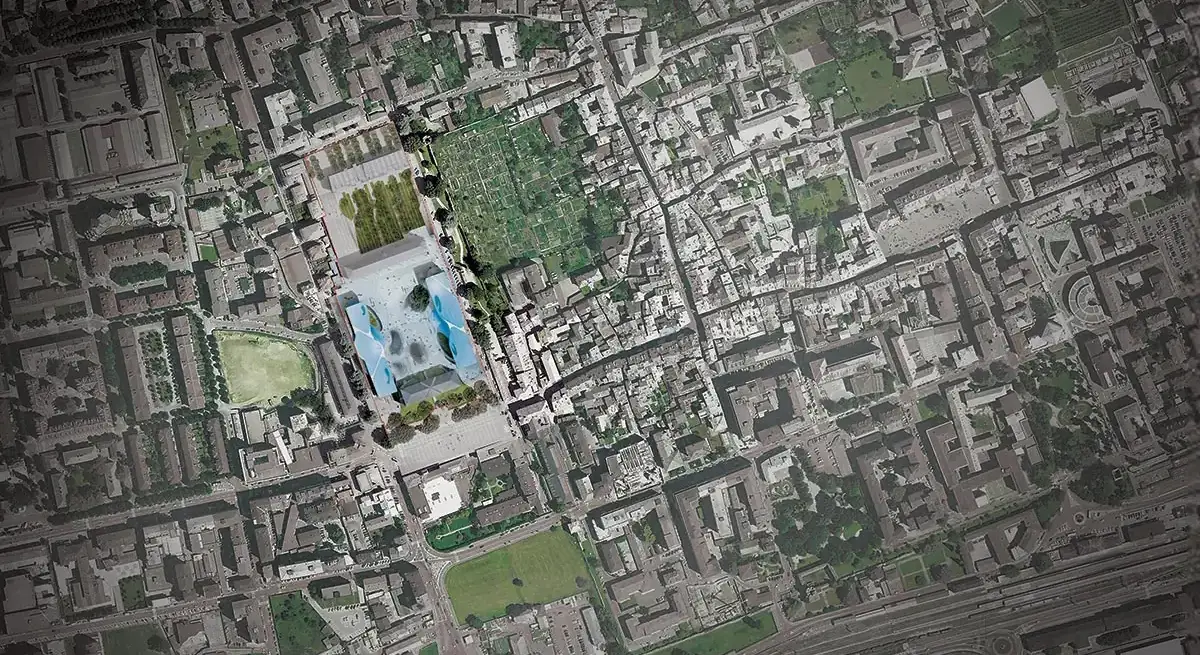
A campus plan shows both classroom buildings and a pedestrian plaza.
The edifice is compact—a decision informed by Cucinella’s in-house team of building-science specialists, who assist with energy analysis and modeling. What began as a rectangular bar with cantilevered classrooms (and too many thermal breaks) iteratively morphed into a building reminiscent of an ice shelf. The horizontally striated facade—mainly ribbons of insulated aluminum panels and glass with stepped ledges surfaced in a stonelike solid acrylic—appears to have been eroded by wind, or to be melting into the landscape. The designers fully leaned into the glacial metaphor, using a palette of white, light gray, and aquamarine that seems plucked directly from the nearby snowy mountaintops. Curvilinear elements soften the entire composition—walls turn corners with rounded fillets, as do stair treads and risers. And the facade that faces away from the campus, toward the town, gently bifurcates to create covered walkways and upper-story terraces.
As solid as the building may seem, four entrances ensure porosity, and a publicly accessible café will encourage light foot traffic. Inside, a cavernous four-story atrium, running along the entire western edge of the building, is the architectural highlight. A series of S-shaped steel ribs, fixed to the ground with pin connections, structures the sinuous outer skin. Although this facade is 70 percent opaque, the space behind it is astonishingly bright. The solid-surface ledges act as solar shelves, bouncing light and creating a diffuse, atmospheric interior. At the very top, operable circular skylights vent warm, rising air.
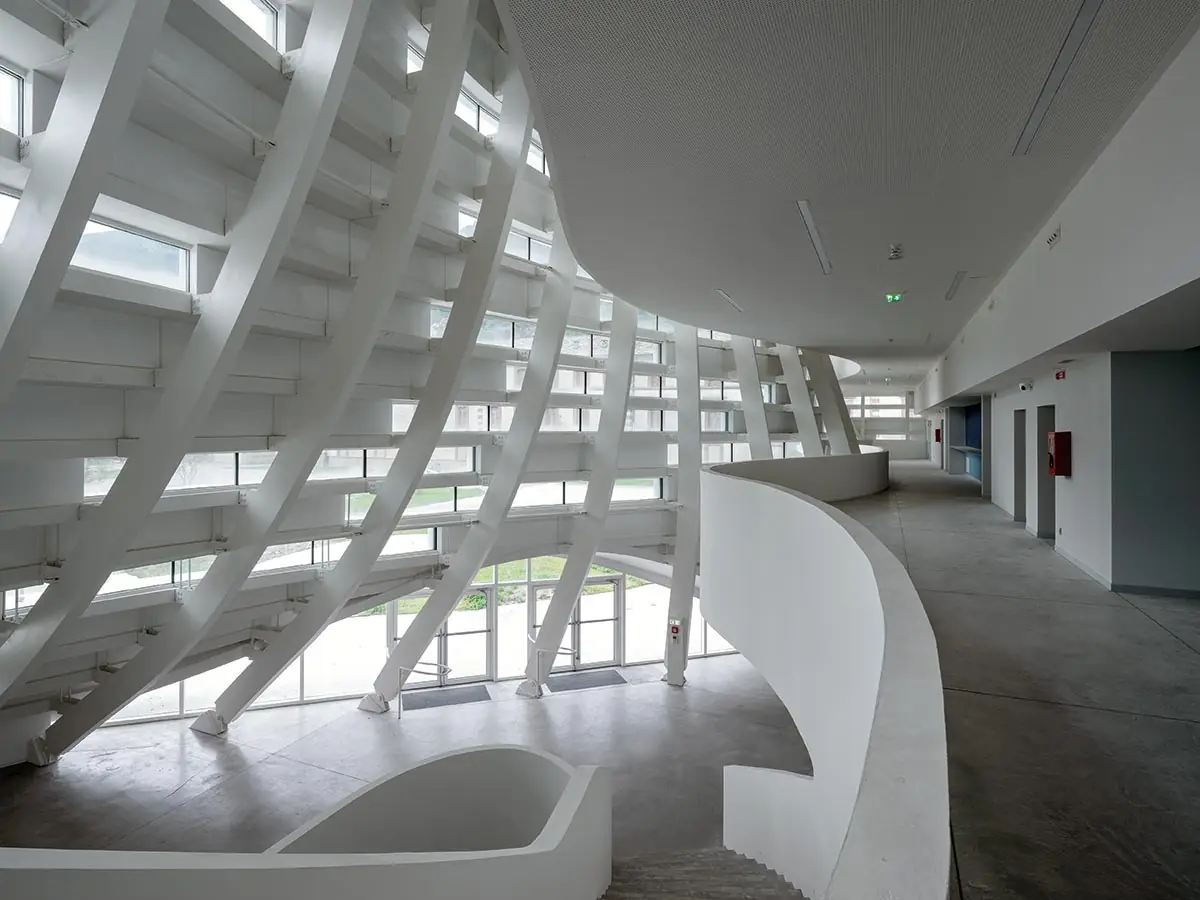
1
Steel ribs in the atrium (1) support the town-facing facade (2), which bifurcates to shelter entrances and create terraces. Photos © Duccio Malagamba
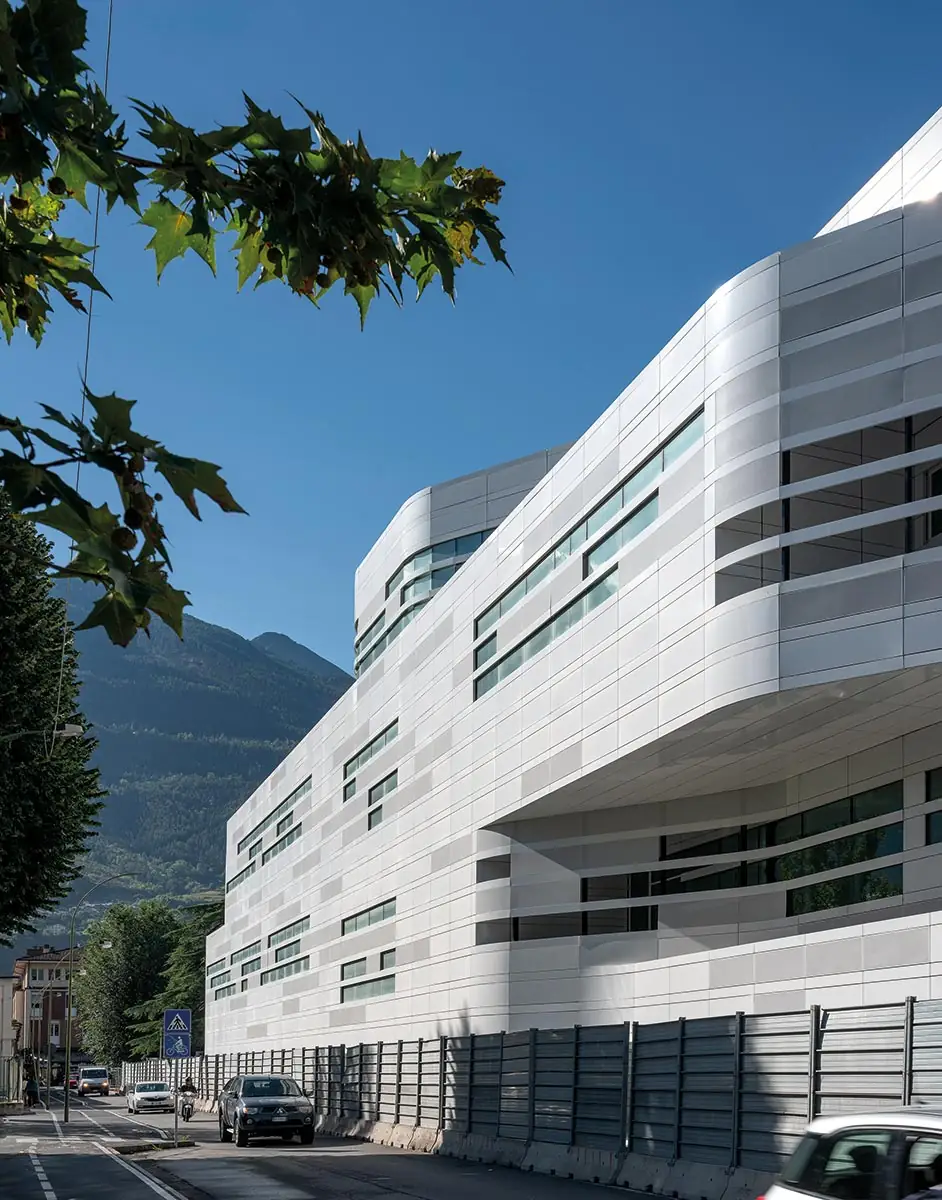
2
From the ground floor, an elliptical stair spirals downward, leading to five laboratories and a 200-seat lecture hall (called the aula magna), which is lined with deep-blue microperforated acoustic panels. The same stair also swirls upward, providing access to smaller seminar spaces and classrooms on the higher floors. Here the balconies push into, and pull away from, the atrium—in tension with the facade and, every so often, grazing it. As students and faculty walk these floors, they will pass framed vignettes of the Mont Blanc group in the distance, which separates Italy from neighboring France. There are an impressive 31 classrooms of varied arrangements packed into the volume—the smallest ones accommodate 20 students; others fit larger groups with raked seating. In some cases, they spill out onto terraces offering panoramic vistas of the surrounding mountains.
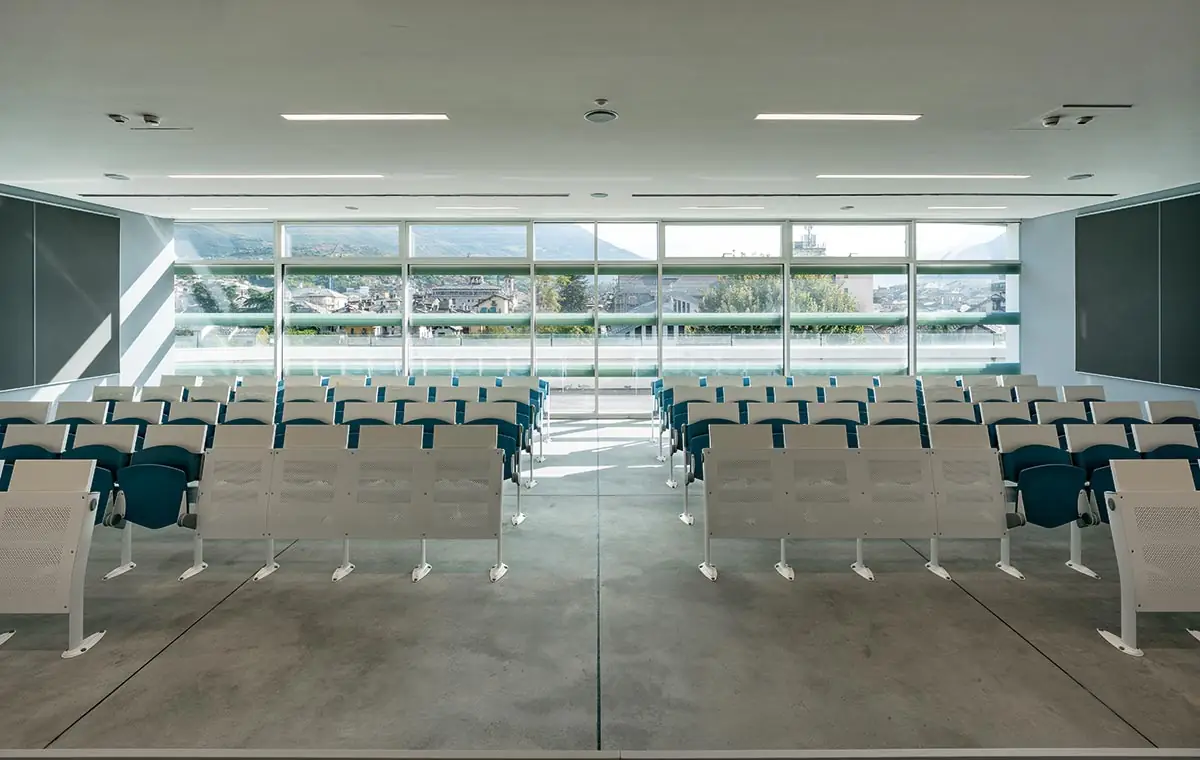
Classrooms look out at the historic townscape and Alps. Photo © Duccio Malagamba
Using public funds, the facility is a nearly zero-energy building (NZEB)—today a requirement in the European Union, but at the time of construction, only a request by the client. Although geothermal wells, cold-water extraction from the ground, graywater collection, materials with high R values, and photovoltaic panels on the roof all help achieve this, the optimized envelope, which minimizes heat gain, and the naturally ventilating atrium do a yeoman’s work. “Architects in general have become too attached to the idea that technology can solve all problems. When a building is designed poorly from the start, no amount of technology is enough to fix it,” Cucinella says. “And,” he points out, as a reason why he founded the postgraduate School of Sustainability in Milan in 2015, “there are few university programs in Italy that help students learn how to design buildings in relationship to climate and energy.”
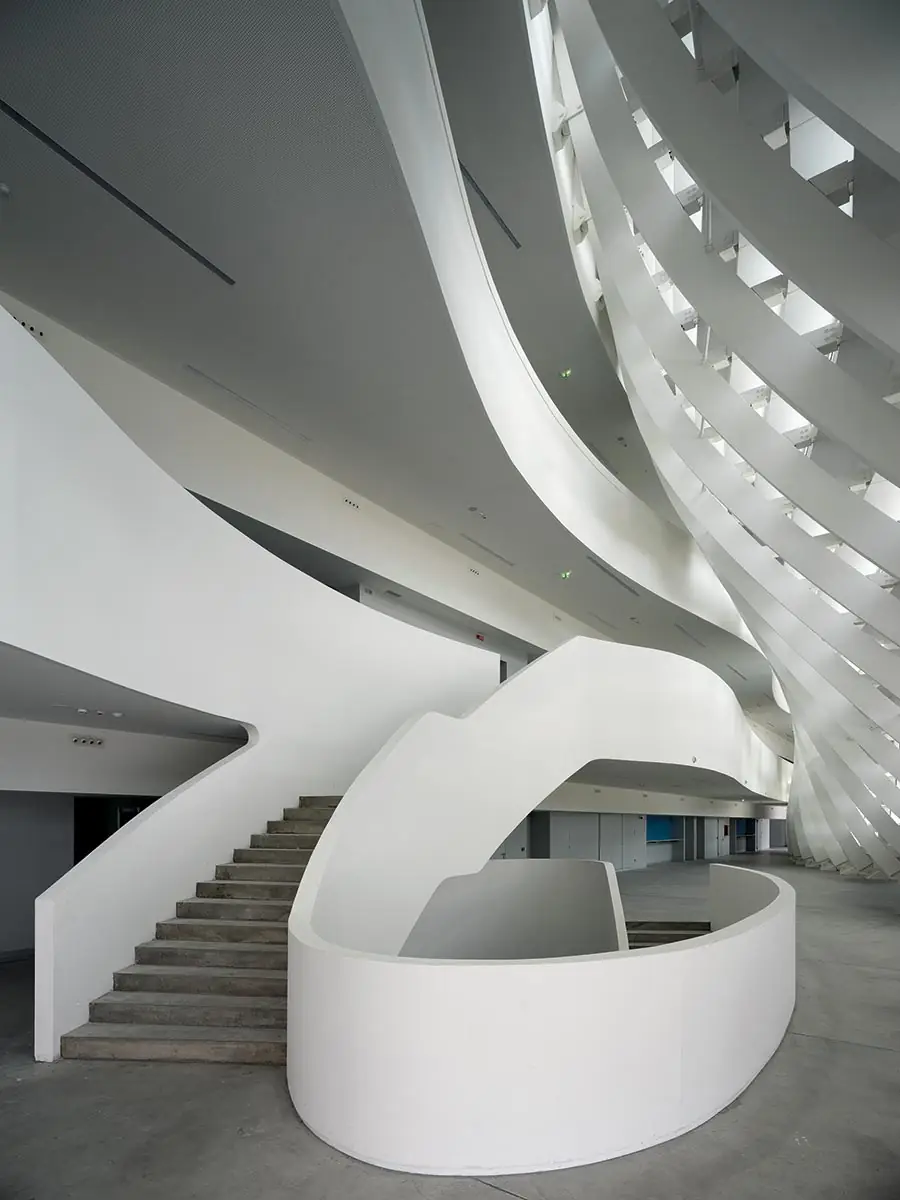
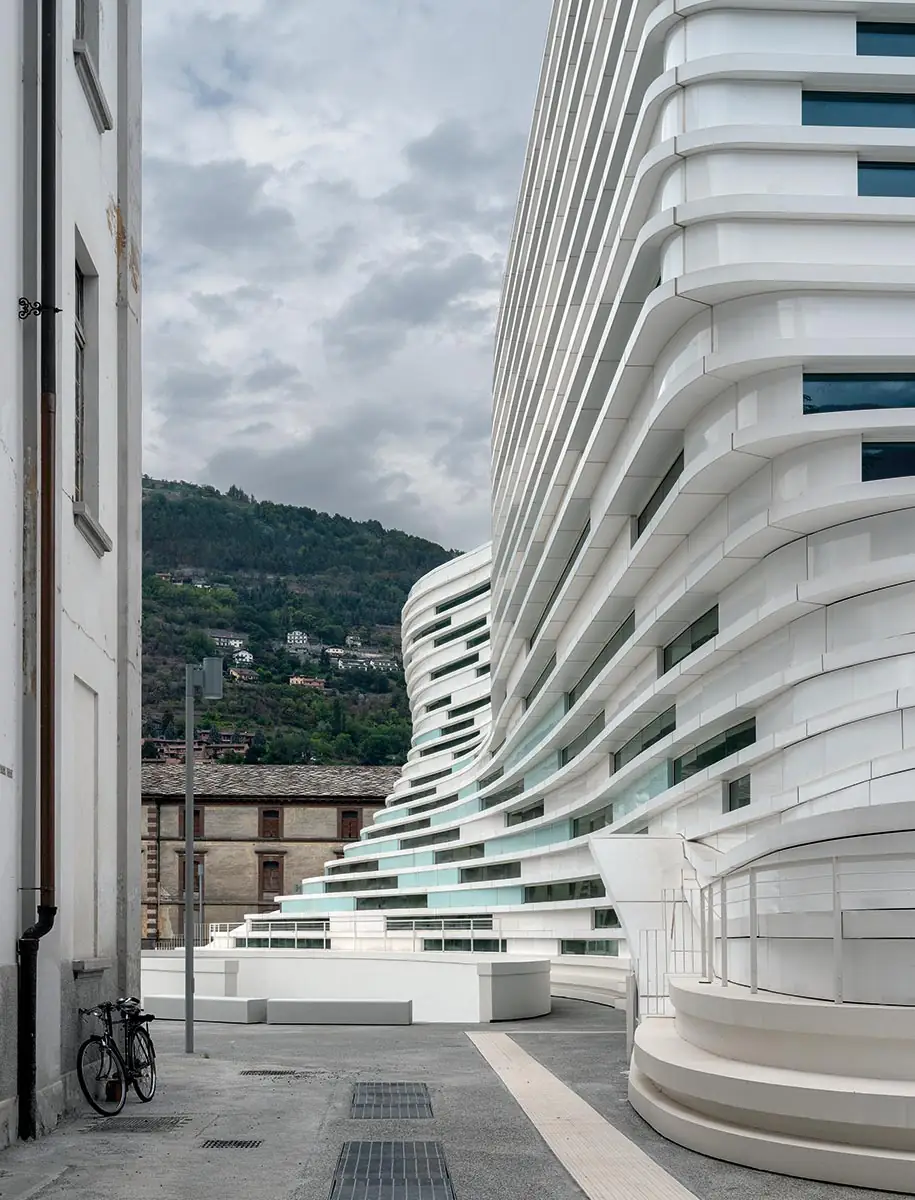
Photos © Duccio Malagamba
In a country where most universities occupy disparate spaces in historic buildings across their home cities, a proper campus with brand-new facilities is a rare and valuable asset—one that administrators of the relatively young University of Valle d’Aosta (classes began in 2001) are seeking to leverage. In recent years, many Italians have increasingly looked elsewhere in Europe for educational opportunities; the university is also aiming to attract talent from across the border for its programs in political science and international relations, economics and management, and languages and communication for business and tourism, among others. But the school also has local ambitions: the reimagined campus will double as an urban park for residents, and the decumanus directly south, now used as a car thoroughfare, will be rendered into a pedestrian plaza, with two levels of parking relocated under Piazza d’Armi.
Amid such a traditional townscape, the new building at the University of Valle d’Aosta markedly stands out—but, as the architect explains, that’s precisely the point. “After all these years, I still think back on my kindergarten—it left such a strong impression on me,” Cucinella says of the circular experimental school he attended, designed by the daring Bolognese architect Giuseppe Vaccaro. “Architecture, especially educational buildings, should prompt curiosity and spark imagination, and—hopefully—those memories stick with students. That’s why I design buildings like this.”
Click plan to enlarge
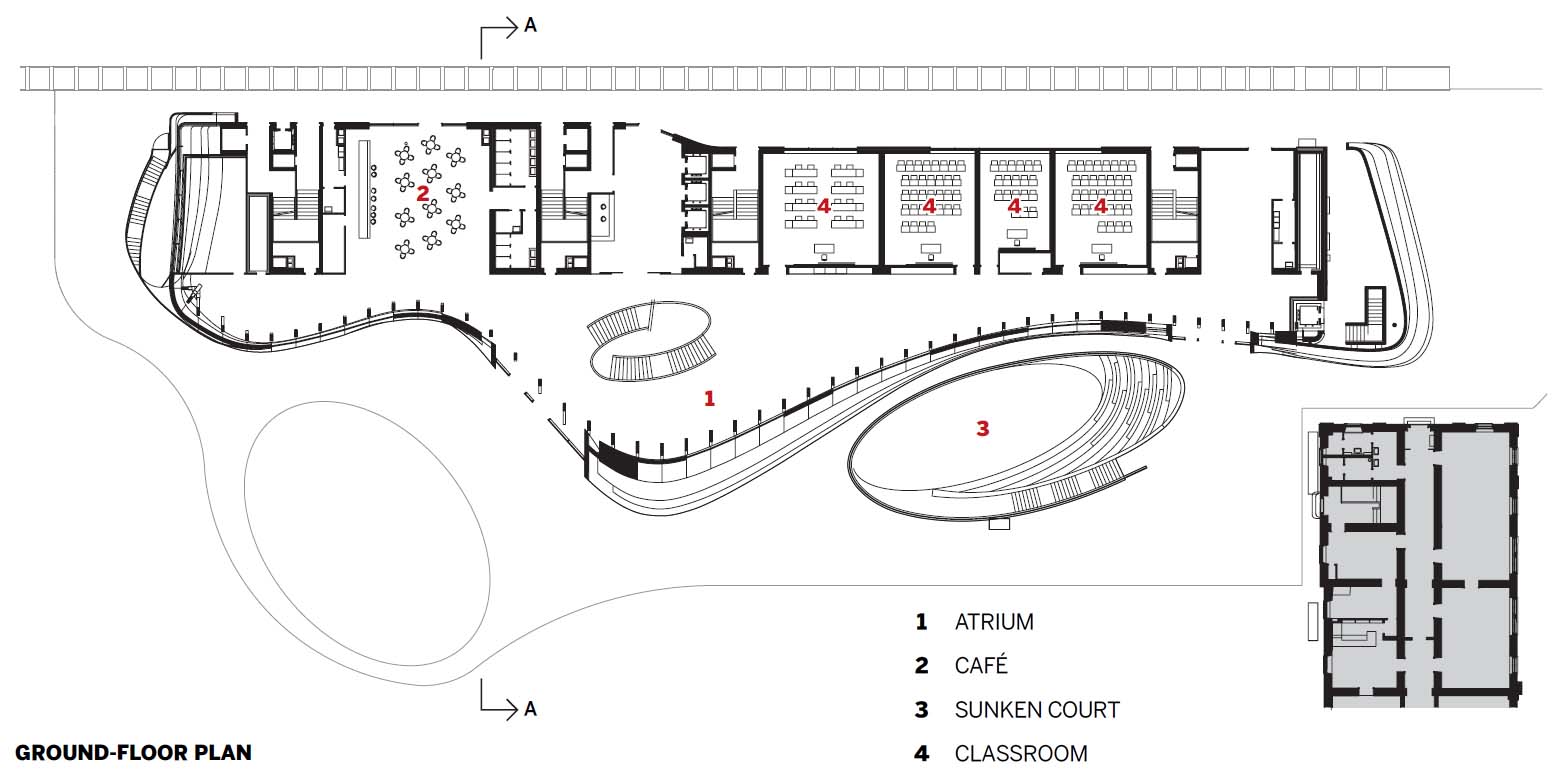
Click plan to enlarge
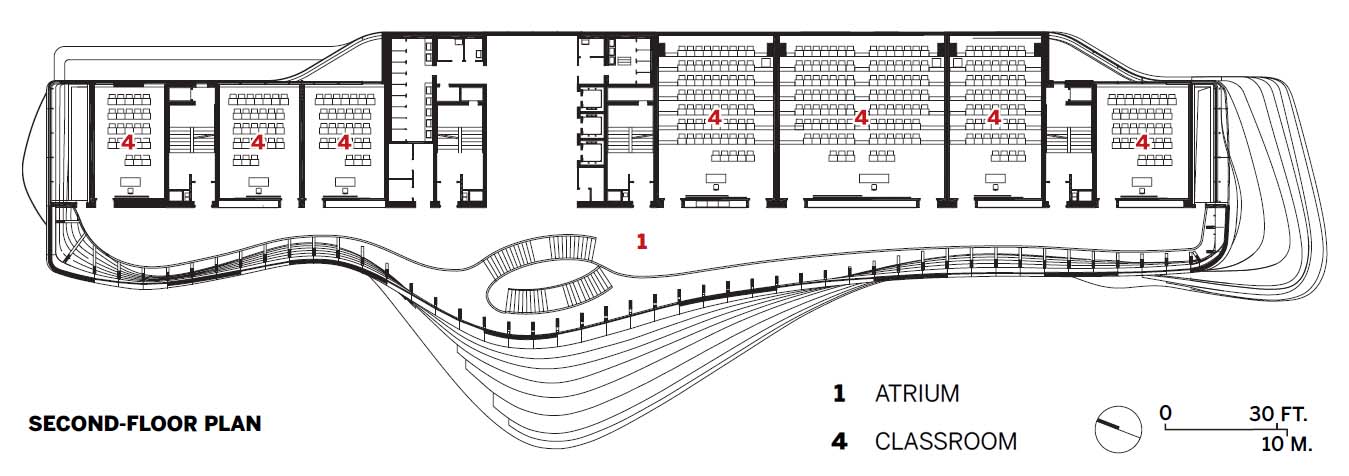
Click drawings to enlarge
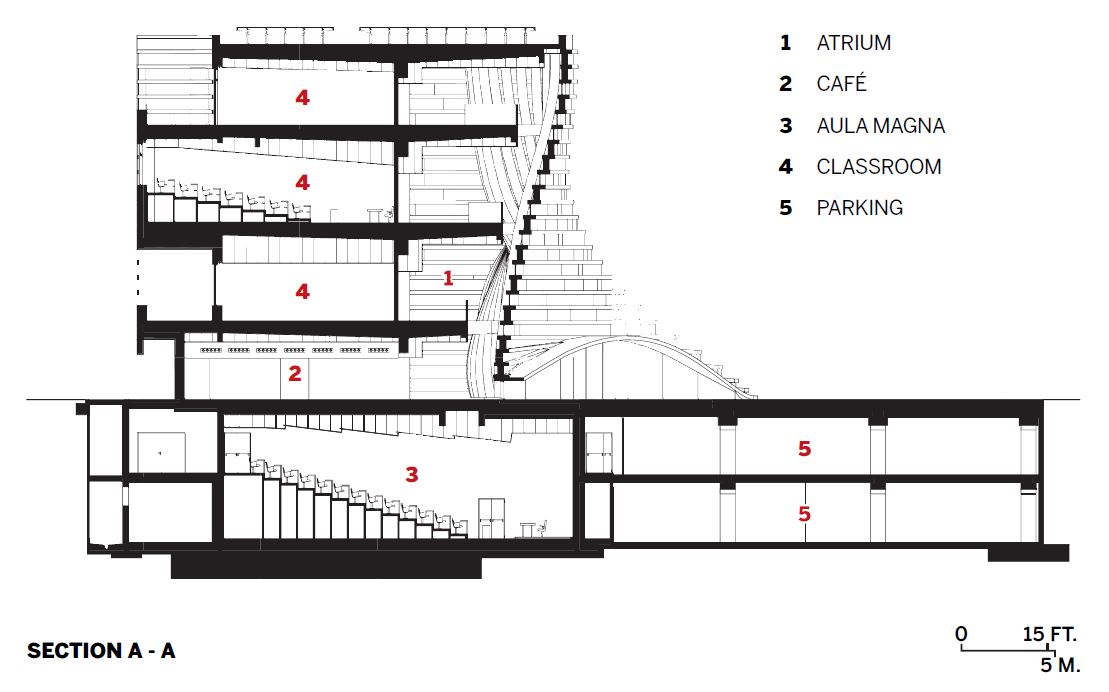
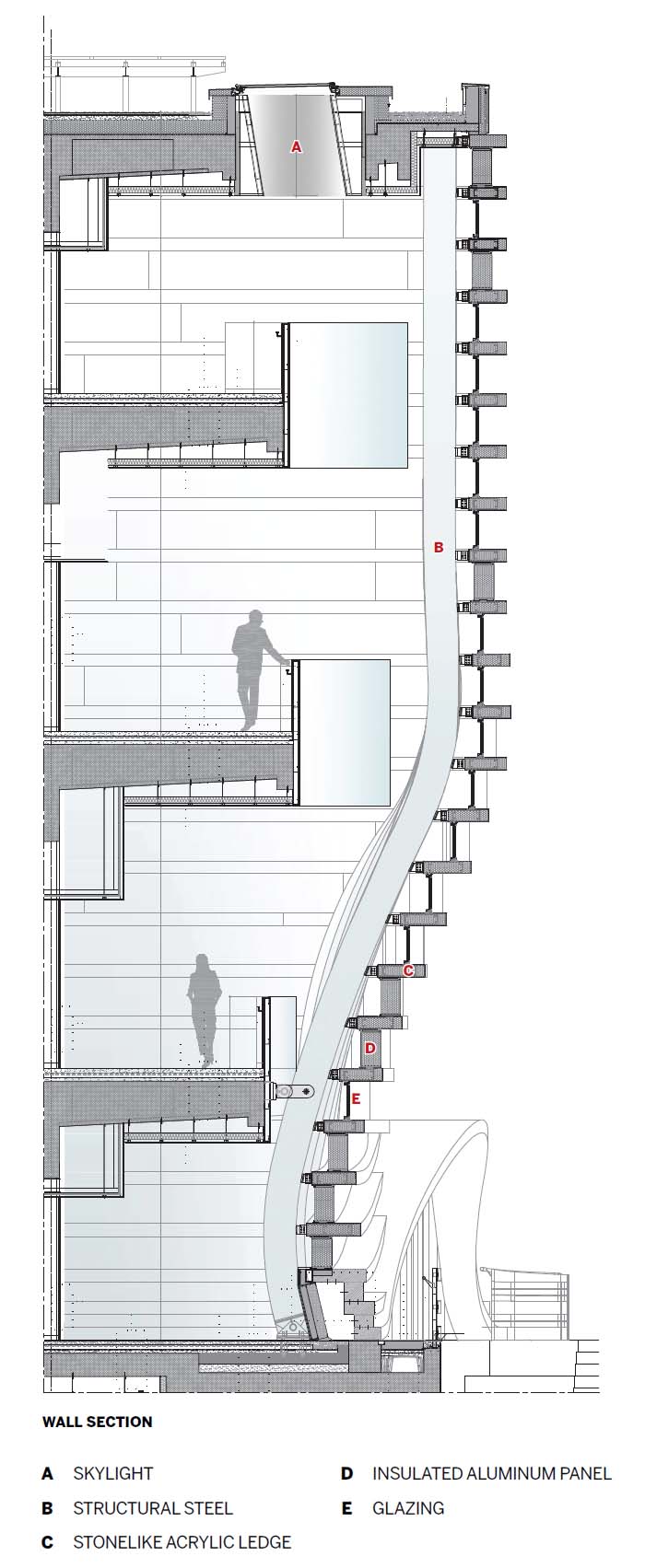
Credits
Architect:
Mario Cucinella Architects — Mario Cucinella, principal; Giulio Desiderio, Donato Labella, Julissa Gutarra, Michele Olivieri, Nada Balestri, David Hirsh, Rigoberto Arambula, Fabrizio Bonatti, Luca Stramigioli, Giulia Pentella, Alberto Bruno, design team; Yuri Costantini, model-maker
Collaborating Architects:
Studio Pession Associato, Tetrastudio Architetti Associati, Roberto Rosset Architetto
Engineers:
Sintecna (structural); Maurizio Saggese, Giuseppe Amaro (m/e/p)
Client:
Société Infrastructures Valdôtaines
Size:
56,400 square feet
Cost:
$36.9 million (construction)
Completion Date:
August 2023
Sources
Curtain Wall:
Betacryl (stonelike acrylic ledge)
Flooring:
Forbo
Furniture:
Aresline
Acoustical Panels:
Saint-Gobain



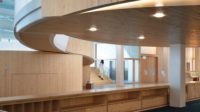
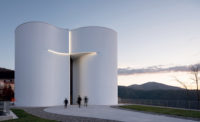

Post a comment to this article
Report Abusive Comment